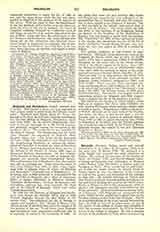

Belgrade and Smederevo, titular (united) sees of Servia. The history of these sees is as confused as their present plight is pitiful from the Catholic stand-point. Dalmatia and Illyria claim St. Titus, the disciple of St. Paul, as their first Christian missionary; but the first Bishop of Belgrade, Theodosius, dates only from 1059. As the ancient Singidunum, however, it was an episcopal see in the fourth century, but gradually declined during the invasions of the barbarian Slays. The medieval see was founded by the King of Croatia. The Hungarians and the Venetians disputed the possession of Belgrade (Serb Beograd, white city). The latter having destroyed the town (1126), the episcopal see was transferred to the neighboring Scardona, so extensively embellished by them that it received the name of Scardona Nova. Religion had long flourished there, for one of the bishops at the Council of Salona (530) signs as Episcopus Ecclesae Scardonitanae. On the occasion of the transfer to Scardona the title of Belgrade disappears for centuries from ecclesiastical history. The neighboring city of Smederevo (Lat. Semendria) was also an episcopal see. Gams gives the names of four of its bishops from 1544 to 1605, a list, beginning 1334, of bishops whom he styles “of Belgrade and Semendria” (Nadoralbenses et Belgradenses). It is certain that in 1650 Innocent X reestablished the title and See of Belgrade; for a Brief (December 4, 1651) is extant addressed to Matthew Benlich, Episcopus Bellegradensis, Ecclesiae Samacliensis Administrator, creating him vicar Apostolic for those sees of the Church of Hungary which were under Turkish domination.
In 1729 the two Dioceses of Belgrade and Smederevo were united by Benedict XIII, and in 1733 Vincent Bagradin became the first holder of the double title. Thenceforward the list of bishops is regular and complete. The “Notizie di Roma” (the official annual of the Holy See) gives the names of all the prelates of this see. Until recent years Belgrade and Smederevo were considered residential sees; it is expressly so stated in the consistory of 1858. It was added that these two sees (ancient Alba Graeca and Singidunum respectively) were suffragans of the metropolitan See of Antivari, and that the nomination to them resided in the Emperor of Austria, “but as they are held by the infidels, their actual state is passed over in silence”. For many years the title was given to the auxiliary of an Hungarian bishop (at present to the auxiliary of the Archbishop of Zagrab) who was bound to reside with his superior. The “Gerarchia” for 1906, without giving any notice of the change, has transferred this see to the list of titular bishoprics, though Bishop Krapac, who now holds the title, was named in 1904 as a residential bishop.
The present condition of this Church is most lamentable. The limits of the diocese are those of the Kingdom of Servia, which has an area of 18,63f square miles and a population (1905) of 2,676,989, belonging for the most part to the Greek schism, which is the official religion of the State. Since 1851 the Bishop of Diakovar acts as administrator Apostolic; since 1886 the territory is united to the ecclesiastical province of Scutari (Kirch. Handlex., I, 533). There are only two or three priests, who divide their activities between the three principal stations of Belgrade (4,000 Catholics), Kragujevatz (200), and Nish (I,000). There are also seven secondary stations, numbering about 1,000 Catholics all told. (It is-to be noted that according to the “Statesman’s Year Book” for 1907, the Servian census of 1900 gives. 10,243 Catholics.) One church, two chapels, and two-elementary schools (at Belgrade and Nish respectively) complete the list of the mission’s resources.
The statistics say nothing of Uniat Greeks, which leads us to suppose that these Latin Catholics are-only western Europeans whose business obliges them to reside in Servia. Belgrade has (1905) a population of 80,747. Situated on the right bank of the Danube, just below the Save, it has always been a natural fortress, and as such is famous in military history. From 1522 to 1867 it passed alternately from Turks, to Austrians; in the latter year the Turkish garrison was withdrawn, and in 1878, by the Treaty of Berlin, Belgrade became the capital of the new Christian Kingdom of Servia.
ALBERT BATTANDIER

